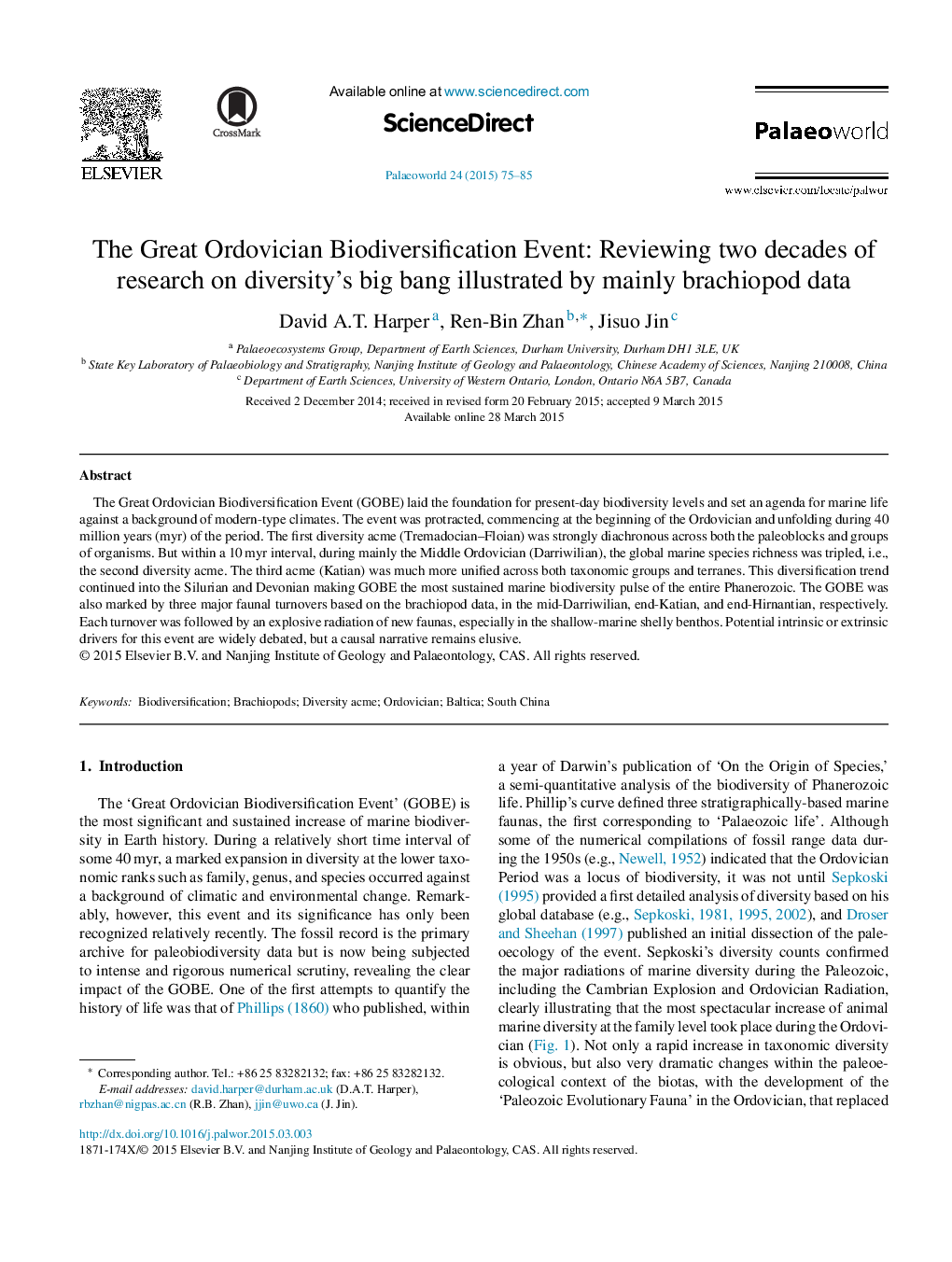| کد مقاله | کد نشریه | سال انتشار | مقاله انگلیسی | نسخه تمام متن |
|---|---|---|---|---|
| 4749623 | 1642275 | 2015 | 11 صفحه PDF | دانلود رایگان |

The Great Ordovician Biodiversification Event (GOBE) laid the foundation for present-day biodiversity levels and set an agenda for marine life against a background of modern-type climates. The event was protracted, commencing at the beginning of the Ordovician and unfolding during 40 million years (myr) of the period. The first diversity acme (Tremadocian–Floian) was strongly diachronous across both the paleoblocks and groups of organisms. But within a 10 myr interval, during mainly the Middle Ordovician (Darriwilian), the global marine species richness was tripled, i.e., the second diversity acme. The third acme (Katian) was much more unified across both taxonomic groups and terranes. This diversification trend continued into the Silurian and Devonian making GOBE the most sustained marine biodiversity pulse of the entire Phanerozoic. The GOBE was also marked by three major faunal turnovers based on the brachiopod data, in the mid-Darriwilian, end-Katian, and end-Hirnantian, respectively. Each turnover was followed by an explosive radiation of new faunas, especially in the shallow-marine shelly benthos. Potential intrinsic or extrinsic drivers for this event are widely debated, but a causal narrative remains elusive.
Journal: Palaeoworld - Volume 24, Issues 1–2, March–June 2015, Pages 75–85